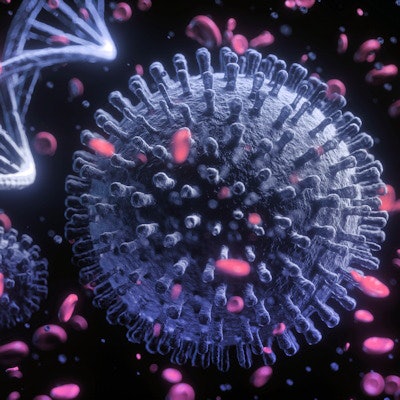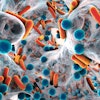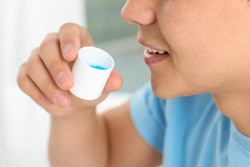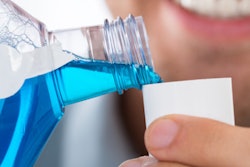
Gargling with a mouthwash and using a nasal spray containing povidone iodine may significantly reduce viral load in patients with mild to moderate COVID-19, according to a research letter published on February 4 in JAMA Otolaryngology -- Head & Neck Surgery.
Reducing the nasopharyngeal viral loads of patients diagnosed with COVID-19 can help limit the spread of SARS-CoV-2, according to the authors.
"Nasopharyngeal decolonization may reduce the carriage of infectious SARS-CoV-2 in adults with mild to moderate COVID-19," wrote the group, led by Dr. Jeremy Guenezan from the emergency department at the University Hospital of Poitiers in France.
SARS-CoV-2 is transmitted primarily through the aerosolization of droplets containing contaminated nasopharyngeal secretions. In vitro studies have shown that povidone-iodine solutions at concentrations as low as 0.5% rapidly inactivate SARS-CoV-2 with contact times as short as 15 seconds.
Dental teams have encouraged patients to gargle with a variety of different rinses, including povidone-iodine products and chlorhexidine mouthwash, prior to procedures to help reduce the spread of the novel coronavirus.
The new study included 24 patients who tested highly positive for SARS-CoV-2 RNA by reverse transcription polymerase chain reaction (RT-PCR) via nasopharyngeal swabs within the previous 48 hours. Half of the subjects served as a control group. The others were asked to rinse four times in a row with mouthwashes and gargles containing 25 mL of 1% liquid povidone-iodine solution, followed by one 2.5-mL nasal spray of the same solution into each nostril using an intranasal mucosal atomization device connected to a 5-mL syringe.
Then, one application of 10% povidone-iodine ointment was dabbed on each nasal mucosa and massaged into the area. The patients were told to perform this regimen four times a day for five days. Follow-up was completed on day 1 and then every two days until day 7 to assess the efficacy and safety of the viral decolonization method. A linear mixed model for repeated measures was used to compare the samples, according to the authors.
Guenezan and colleagues measured the mean relative difference in viral titers, representing the burden of virus in a fluid volume. Those who used the povidone-iodine rinses and nasal sprays saw a 75% difference in viral load between baseline and day 1, compared with a 32% difference in the control group.
Despite the results, the study had limitations, including the small sample size and the single-center design. Study strengths included assessing the viral titer in patients to determine whether the virus was viable and, therefore, possibly transmissible, the authors wrote.
A larger clinical study should be completed in the future to "confirm the benefit of [povidone iodine] in limiting the excretion and resulting human-to-human transmission of SARS-CoV-2," they added.




















